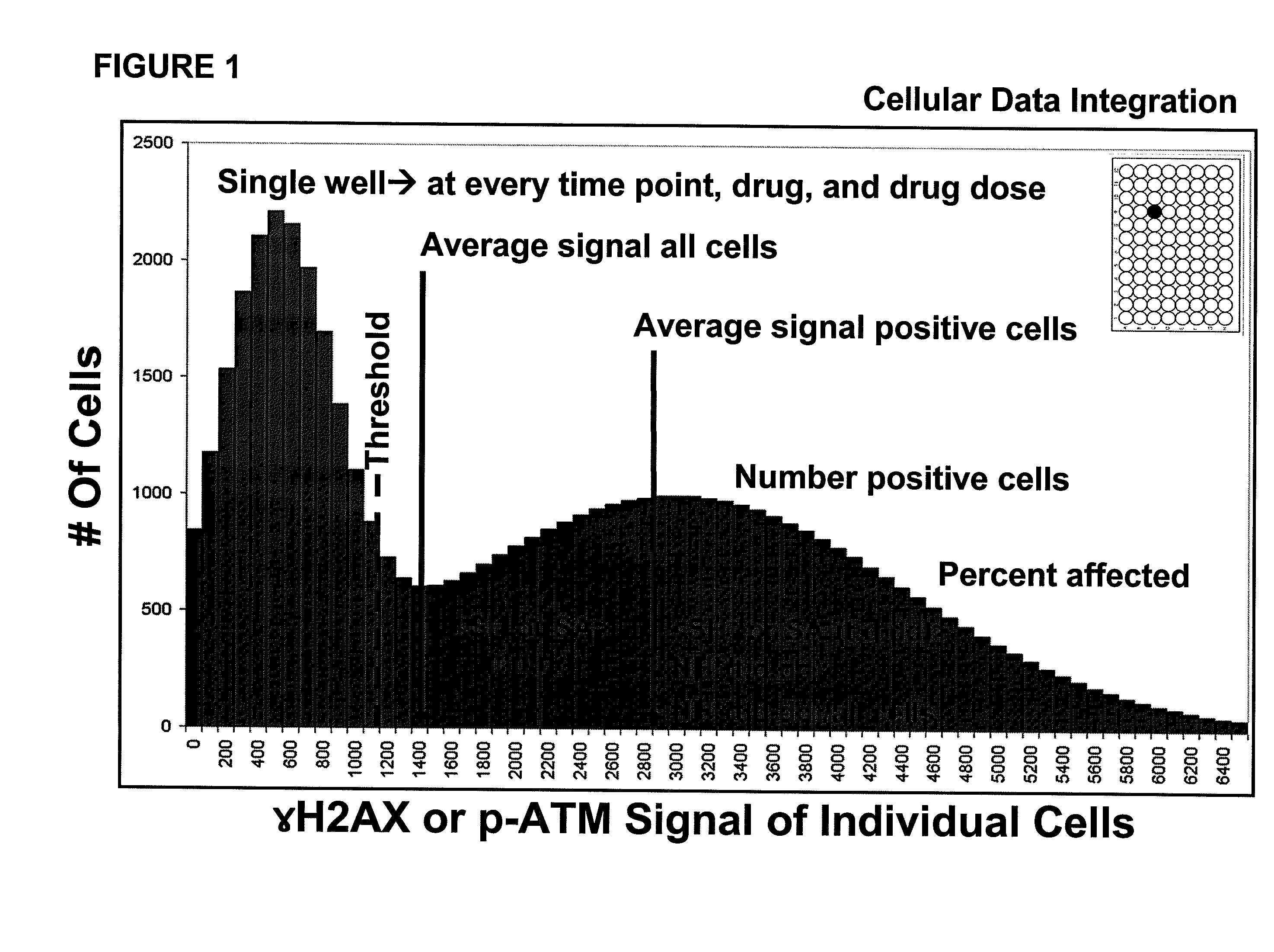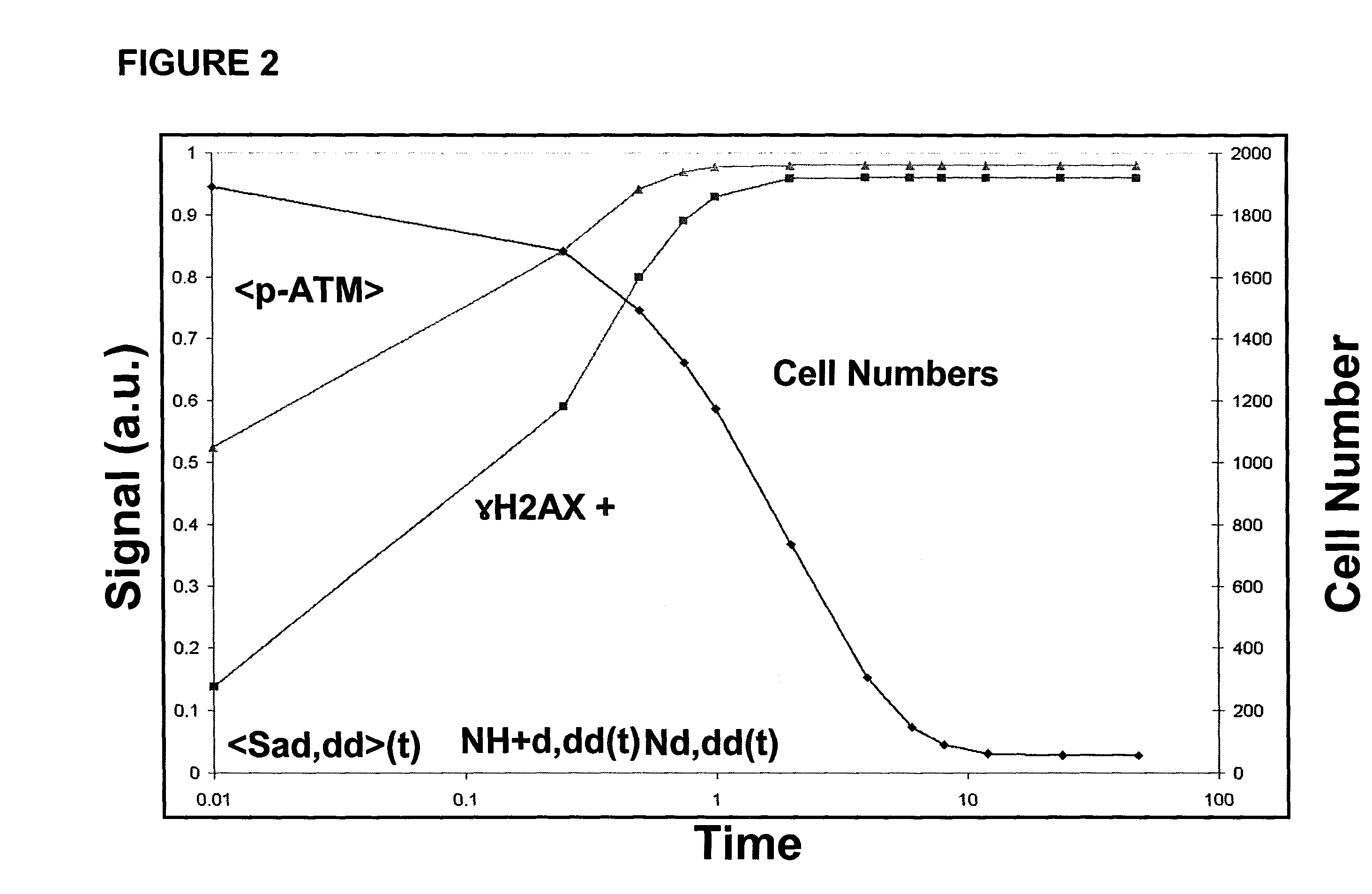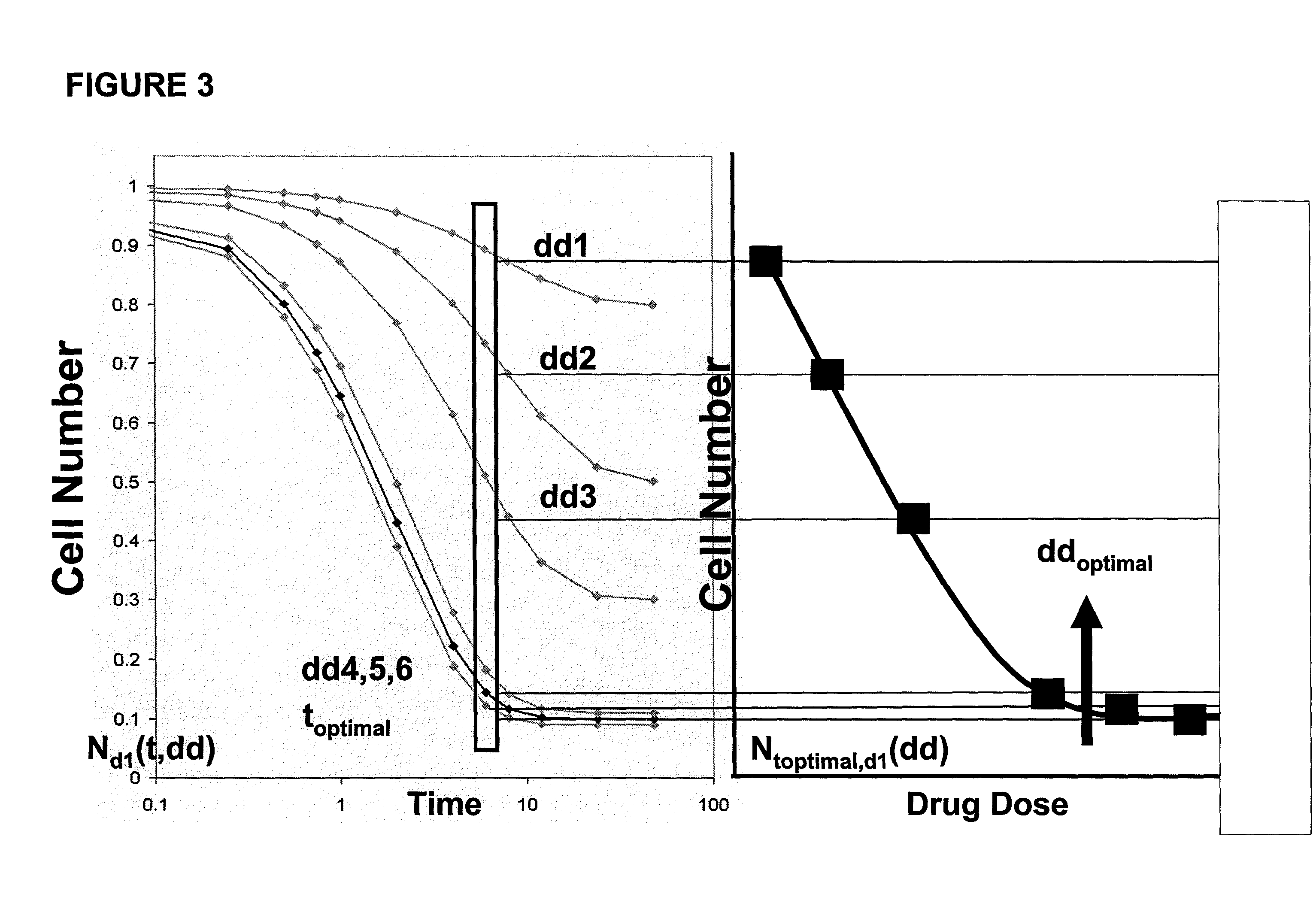Methods and Compositions Related to Cellular Assays
a technology of cellular assays and compositions, applied in the field of methods and compositions related to cellular assays, can solve the problems of millions of dollars and long development time of drugs or pharmaceutical compounds
- Summary
- Abstract
- Description
- Claims
- Application Information
AI Technical Summary
Benefits of technology
Problems solved by technology
Method used
Image
Examples
example 1
Antibody Quality and Specificity and Antibody Purification
[0201]Clearly, the usefulness of an antibody for immunofluorescence protocols requires a far more stringent assessment of its specificity than for certain other techniques. While irrelevant cross-reacting proteins can often be ignored in Western blotting procedures, assuming that the cross-reacting proteins migrate at distinctly different positions on the SDS gel than the protein of interest, no such cross-reacting material can be tolerated in immunofluorescence images. Many procedures have been developed for the purification of IgG molecules from raw serum samples or mouse ascites fluid that involve affinity purifications or the use of IgG-specific resins containing coupled Staphylococcus protein A or Streptococcal protein G [K. Huse, et al. Biochem. Biophys. Methods 51 (2002)217-231; M. Page, R. Thorpe, In the Protein Protocols Handbook, in: J. M. Walker (Ed.), Humana Press Inc., Totowa, N. J., 2002, pp. 993-994], and numer...
example 2
Cell Preparation and Staining Optimization
[0204]In this section several considerations of cell growth, fixation and staining methods that are of great significance for producing optimal immunofluorescent images are discussed.
Importance of Cover Slip Thickness in High-Performance Optical Microscopy
[0205]In preparation for immunofluorescent staining, cells are typically grown on cover slips, which can be seen as the first “lens” of a microscope objective lens. Its quality is, therefore, essential for high-quality microscopy. The most important feature of the cover slip is its thickness, since the design of a high-performance objective lens assumes a certain cover slip thickness. Most objectives have a range of cover slip thickness for which they are optimized printed on their collar. If the thickness is outside this range spherical aberrations are introduced into the imaging path, leading to potentially severe degradation of image quality. The z-resolution is especially affected by th...
example 3
Super-Resolution Microscopy Exemplified by 4Pi
[0218]Image resolution is determined by (i) the pixel size, which can be easily controlled by choosing a suitable magnification of the microscope and (ii) optical resolution. Choosing a pixel size approximating half the optical resolution value renders it non-limiting and is, therefore, highly recommended. The optical resolution, however, is fundamentally limited by diffraction and cannot be adapted easily. Even the best objectives with the highest NAs available provide only about 200 nm resolution in the focal plane. The depth (or axial) resolution is at least 2.5 times worse, making it impossible to differentiate between two objects that are axially separated by 500 nm or less. Using a regular wide-field microscope, axial discrimination, especially of bulky objects within a DAPI-stained nucleus, becomes extremely difficult or even impossible due to the strong out-of-focus background contribution to the signal. In this case, colocalizat...
PUM
| Property | Measurement | Unit |
|---|---|---|
| Time | aaaaa | aaaaa |
| Concentration | aaaaa | aaaaa |
| Size | aaaaa | aaaaa |
Abstract
Description
Claims
Application Information
 Login to View More
Login to View More - R&D
- Intellectual Property
- Life Sciences
- Materials
- Tech Scout
- Unparalleled Data Quality
- Higher Quality Content
- 60% Fewer Hallucinations
Browse by: Latest US Patents, China's latest patents, Technical Efficacy Thesaurus, Application Domain, Technology Topic, Popular Technical Reports.
© 2025 PatSnap. All rights reserved.Legal|Privacy policy|Modern Slavery Act Transparency Statement|Sitemap|About US| Contact US: help@patsnap.com



